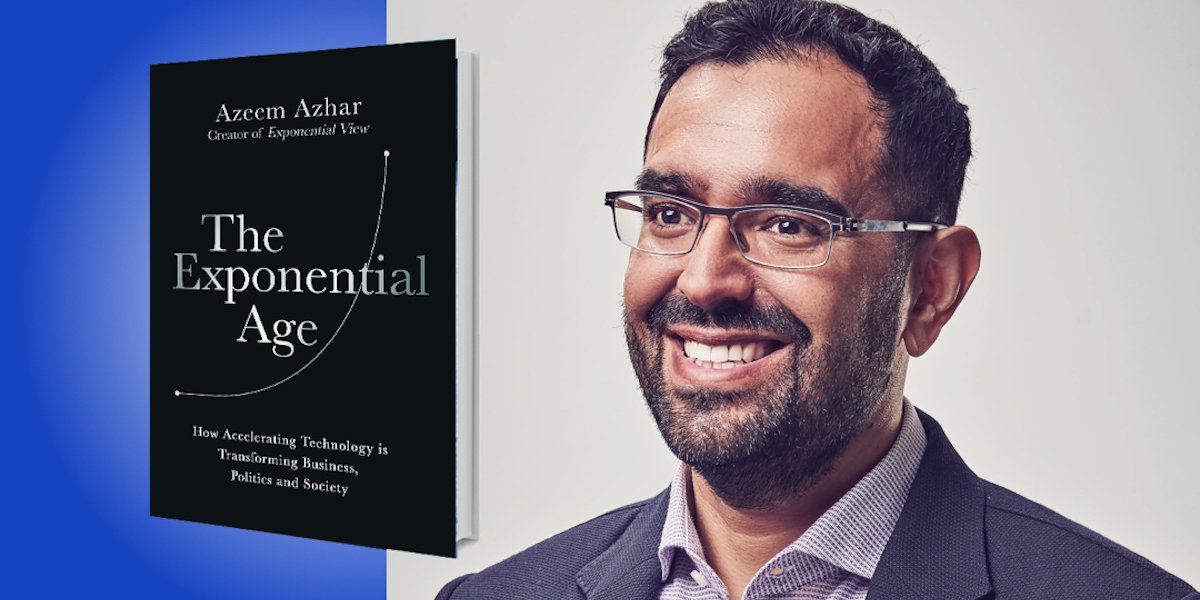3 Business Sectors Where Visual Tech Helps Us Move Toward The Net-Zero Economy
/LDV Capital invests in people building businesses powered by visual technologies. We thrive on collaborating with deep tech teams leveraging computer vision, machine learning, and artificial intelligence to analyze visual data. We are the only venture capital firm with this thesis.
In 2014, we launched the LDV Vision Summit – an annual event for entrepreneurs, researchers, investors, media executives, and creators. In 2020, our Summit was a virtual event for the very first time and it turned into great success – hundreds of people joined us from at least 15 countries!
The following is a transcript of Azeem Azhar’s keynote on visual technologies that help us fight climate change from the 7th annual LDV Vision Summit.
Azeem Azhar is the creator of Exponential View, a leading platform for in-depth tech analysis. His podcast has featured leading AI researchers, famous politicians, top-tier investors and many others.
Azeem is a Venture Partner at Kindred Capital and an entrepreneur – he founded PeerIndex which processed social data using machine learning to identify novel, actionable signals. This company was acquired by Brandwatch in 2014.
Azeem has also written a book “The Exponential Age: How Accelerating Technology is Transforming Business, Politics and Society”. It’s a bold exploration and call-to-arms over the widening gap between AI, automation, and big data – and our ability to deal with its effects.
In his keynote, he demonstrates how visual technologies can help us transition towards net-zero and decarbonization of our economy. Watch this 6-minute video or read the shortened transcript below.
It's been about eight-ish years since AlexNet won the ImageNet Large Scale Visual Recognition Challenge 2012 and helped us realize that we had an innovation that we could engineer and start to tackle this thorny problem of getting computers to see.
On one hand, eight years is a long time. In the United States, we've seen three presidents go through it. We've also seen the AI boom.
I want to reflect on what Evan saw and identified all the way back then. I can hardly believe that this is the 7th LDV Vision Summit! Hats off and congratulations to the whole LDV team for having that vision!
The other thing that's happened in these eight years is that the dialogue around climate change has fundamentally changed. It has become a tremendous priority in large businesses, in national economies, and amongst founders as well. It should have been a priority of course a long time ago.
I'm heartened by the fact that more than 300 large companies have got Net Zero Commitment Summits, as soon as 2030, that dozens of companies have done the same, and that many more entrepreneurs are moving in that direction.
It's interesting to think about what we can achieve as a venture capital community when it comes to solving challenging problems. Back in 2011, little money went into AI research. As soon as we proved that there was an ‘engineerable’ problem and that there was a market opportunity, we vectored hundreds of millions and billions of dollars into that sector.
Something similar is happening in climate technologies. Last year, I looked at every funding round globally in any sector since 2013 and identified those that were related to solving the climate change problem and moving toward the net-zero economy. What we discovered was that about $60 billion of capital had been invested between 2013 and 2019 in about 1200 startups. It's a tiny proportion of the assets under management in VC, but it represented an 84% compounded annual growth rate because founders were starting to turn their attention to this problem.
When I look at that problem, the way we frame it is to say, “well, listen, we've got these five key industry sectors all of which need to eliminate their carbon emissions”. It’s fascinating how important visual technologies end up being in each one of these areas. Of course, other technologies come to bear, but most of the problems that we identify, whether it's in the built environment or agriculture and land use, will require being able to go from CPDs capturing photons and turn them into some kind of image that can be processed, analyzed and dealt with. This is an important enabling technology in our journey towards the transition.
Agriculture, land use, and deforestation
Earth observation satellites are now imaging the earth in real-time, every inch of the planet at 20, 30, 40-centimeter resolution. As a result, we're able to assess in real-time what's happening to the biosphere and what's happening to forestation, deforestation, reforestation, and afforestation. It's a critical metric and we need to make good investment decisions in that domain.
Food production
A second area that I find fascinating is how we think about the production of our food. Can we do it in a more effective, efficient fashion and perhaps with high-intensity farming, that's located within cities?
In high-intensity farms, you ultimately need to be able to control the growing conditions. That requires taking readings telemetry, visual telemetry, amongst other things, as well as of course, pH readings from the plants themselves.
Renewable energy systems
The last example that I want to give is the challenge of decentralizing our energy system, moving it towards renewables. What is the payback period for my solar panels? What kinds of solar panels can I put on my house and how am I going to figure it out? The manual survey is incredibly expensive and it is a slow process. We have a number of companies who are able to take those Earth observation satellite images and turn them into accurate rooftop surveys. We can figure out exactly what it's going to cost, exactly the solar yield we're going to get, and when the system can be implemented. It's part of the bigger puzzle of what's the most important goal that we face over the next 10 to 15 years as a community.
The LDV Capital Insights 2020 report explores how visual technologies are powering developments in food and agriculture that will change the way the world grows, manufacturers, transports and consumes food. This five-year market analysis examines visual technologies across 15 different sectors of food and agriculture to determine where visual technologies are being deployed to help feed the world through 2025 and beyond.
You can download the report for free here.
























